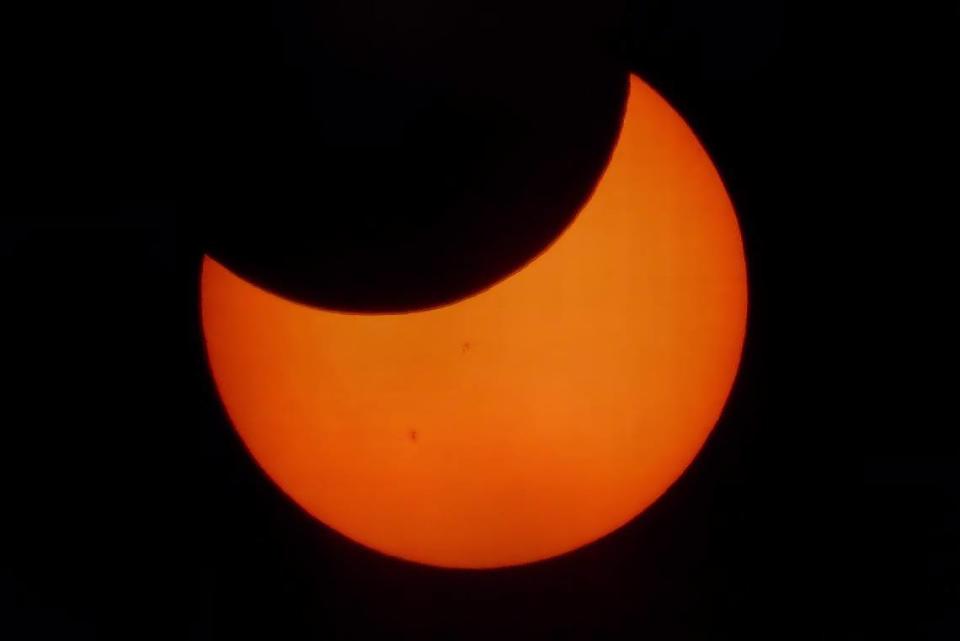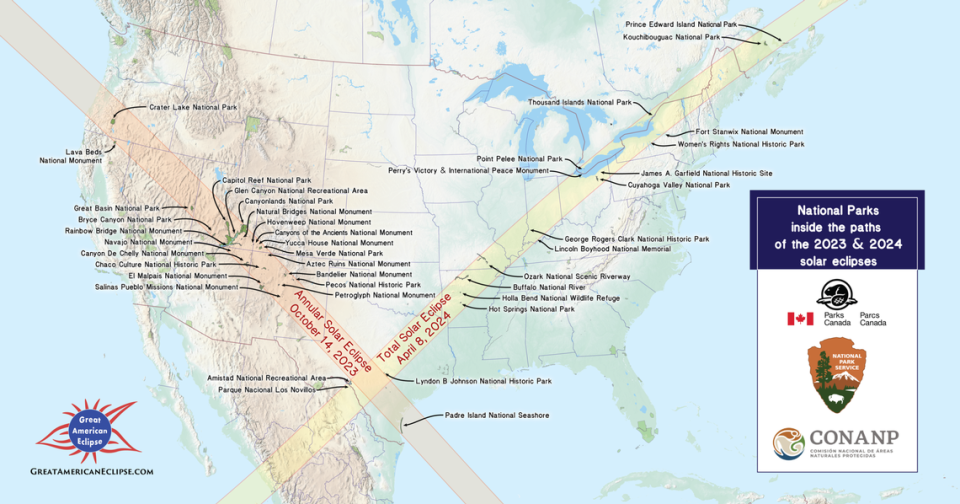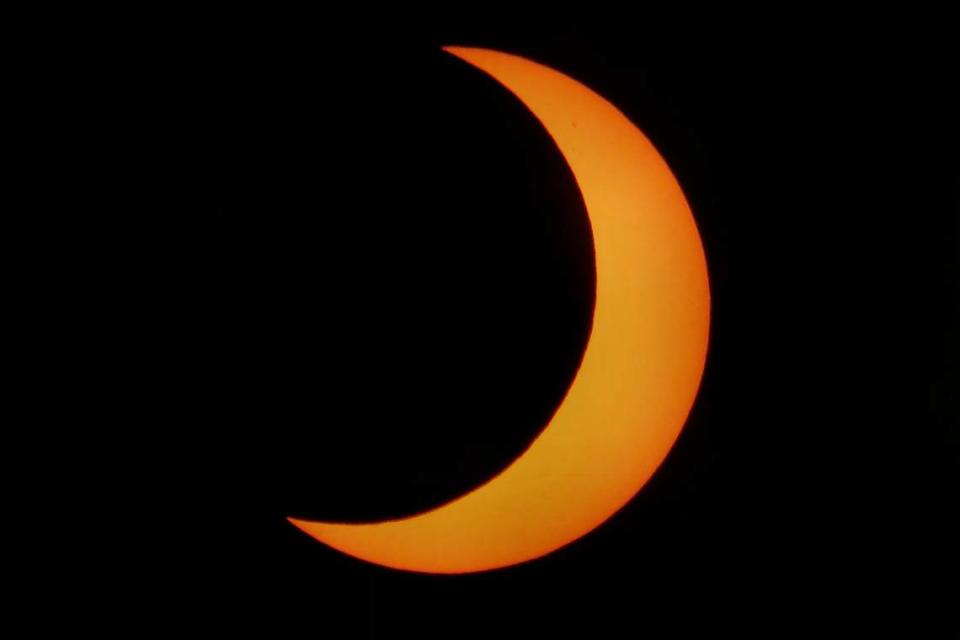‘Ring of fire’ solar eclipse treats SLO County watchers to a glowing crescent
The “ring of fire” annular solar eclipse darkened the morning sky over San Luis Obispo County on Saturday as the Central Coast caught a portion of the astronomical event.
Residents on the Central Coast weren’t able to see the full effect, but the moon crossing in front of the sun did reach about three-quarters of the way at the height of the eclipse, leaving a glowing crescent.
This month’s eclipse began in the United States, traveling from the coast of Oregon to the Texas Gulf Coast, according to NASA.
The path was very narrow — only 118 to 137 miles wide — meaning a relatively small section of the country was able to see the full eclipse.

The last time a solar eclipse darkened local skies was in 2017, when a total eclipse also blocked out roughly three-quarters of the sun — wowing San Luis Obispo County viewers who gathered to watch the spectacle.
In San Luis Obispo County, the eclipse began at about 8:06 a.m., with a peak around 9:21 a.m. before the moon fully cleared the sun about an hour and a half later.
For a look at the eclipse path, check out NASA’s eclipse website at science.nasa.gov/eclipses.

When is the next solar eclipse?
If you miss out on this eclipse, you’ll have another chance to see one relatively soon.
A total solar eclipse is expected to occur on April 8, 2024, crossing Mexico, the United States and Canada, according to NASA.
San Luis Obispo County is well outside the eclipse path for that event, which will head from Texas to the Northeast states, but local viewers will still get to see a partial eclipse of between 40% and 45%.
The next annular solar eclipse that will be visible from the United States is on June 21, 2039 — but that will only be visible from Alaska, according to NASA.


